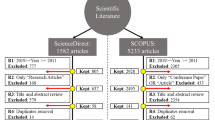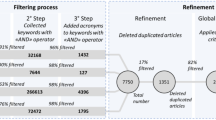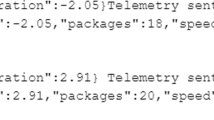Abstract
To date, numerous simplified Life Cycle Assessment methods and techniques have been developed to reduce complexities associated with practical application. However, these methods often identify critical elements according to subjective considerations. In this paper, we develop and apply a new type of Life Cycle Inventory method — Component Manufacturing Analysis (CMA) — that is easy to implement and less arbitrary. Application of CMA requires identification of all product components and their associated weights, which are then entered into a factory-type database. Because the factory database has a rigorous yet generic structure and because calculation is done automatically, the application of CMA tends to be less arbitrary and more complete than other simplified methods. Results of a case study on beverage vending machines show that the manufacturing stage is a significant phase in the whole life-cycle inventory of a product. We conclude that CMA shows promise for further development and future application.
Similar content being viewed by others
References
Christiansen K, de Beaufort-Langeveld A, van den Berg N, Haydock R, ten Houten M, Kotaji S, Oerlemans E, Schmidt WP, Stranddorf HK, Weidenhaupt A, White PR (1997): Simplifying LCA: just a cut? Final report from the SETAC-EUROPE LCA screening and streamlining working group, SETAC-EUROPE, Brussels
De Smet B, White PR, Owens JW (1996): Integrating life-cycle assessment within an overall framework for environmental management, Environmental life-cycle assessment. The McGraw-Hill Companies, Inc., New York, pp. 16.1–16.15
Fleischer G, Schmidt WP (1997): Iterative screening LCA in an eco-design tool. Int. J. LCA 2(1) 20–24
Heijungs R, Guinee JP, Huppes G, Lankreijer RM, Udo de Haes HA, Wegner Sleeswijk A, Ansems AMM, Eggels PG, van Duin R, de Goede HP (1992): Environmental life cycle assessment of products. I: guide LCA — II: backgrounds LCA. October 1992, Centre of Environmental Science (CML), Leiden
Lindfors LG, Christiansen K, Hoffman L, Virtanen Y, Juntilla V, Hanssen OJ, Running A, Ekvall T, Finnveden G (1995): Nordic guidelines on life-cycle assessment. Nordic Council of Ministers, Copenhagen
European Union (1999): NACE Rev. 1, Index of business activities in the European Union, http://www.cdv.co.at/internetpages/cgi/ webc.exe/english/nace
Otoma S, Mori Y (1998): Life cycle energy usage and C02 emissions by beverage vending machines, and evaluation of their reform measures, Energy and Resources 19 (3), pp. 279–284, in Japanese
PRe Consultants (1997): Simapro user manual
Siegenthaler CP, Noppney C, Pagliari F (1995): Ökobilanz-soft-ware Marktübersicht 1995, Ö.B.U./A.S.I.E.G.E., Adliswil
Udo de Haes HA (1993): Applications of life cycle assessment: expectations, drawbacks and perspectives, J. Cleaner Prod. 1 (3–4) 131–137
Author information
Authors and Affiliations
Corresponding author
Rights and permissions
About this article
Cite this article
Mori, Y., Huppes, G., de Haes, H.A.U. et al. Component manufacturing analysis. Int. J. LCA 5, 327–334 (2000). https://doi.org/10.1007/BF02978666
Received:
Accepted:
Issue Date:
DOI: https://doi.org/10.1007/BF02978666




